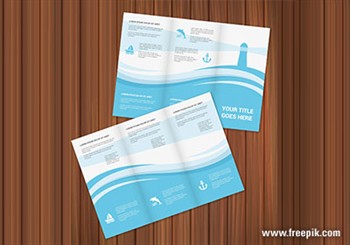Content Audits Part 3: Marketing Collateral Audits
I recently wrote a blog post on Content Strategy: Content Audits, where I explained how important having a content strategy is to producing high-quality, reusable and consistent English and translated content. You can also reduce rework by decreasing the number of times content is created and you can reduce translation costs.
A content audit is one part of a content strategy. A content audit consists of an inventory, which is a document showing the quantity of content, and a qualitative analysis of that content, which is an evaluation of the content for a variety of measures depending on your business goals.
Today we’ll explore how to do a content audit of marketing collateral – both printed and digital – such as brochures, presentations, product data sheets, white papers, customer success stories, digital assets and social media content. Printed collateral is more likely than digital content to become outdated or incorrect so keep that in mind as you’re scoping the project. Since website content is such a key component of a marketing strategy, I’m going to write a separate blog post on that topic so look for that soon.
Some information in marketing collateral such as specifications, product descriptions and contact information is also usually found in technical documents, training materials and website content, so you may want to consider expanding your scope to look at these materials as well.
Content Inventory
To create a content inventory, locate the different types of collateral and the number of documents or assets you have, as well as any associated translations, for the scope of your project. Using a spreadsheet, create a matrix of your findings.
I’d suggest organizing the spreadsheet by collateral to make it easier for the qualitative audit. For example, if you’re auditing brochures, create a column labeled brochures and then list the product / service in rows. If you’re auditing more than one type of asset, create the spreadsheet with the collateral types and the product / service information in the way that makes the most sense for your information.
Qualitative Audit
After you’ve completed the content inventory, it’s time to focus on the qualitative audit. There are many things you could evaluate: quality, effectiveness, messaging, branding, consistency, relevancy to buyers’ journey, structure, published date, language support, terminology, digital location and more.
For this blog post, I’m going to focus on measuring the consistency of structure within marketing collateral sets and then look at opportunities to reuse similar content sections. By making your collateral sets structurally consistent and reusing content sections, customers reading your content will see consistent information, looking like it’s coming from one company. The translation cost is less because more of the content is fuzzy or repeatable.

Audit Content Structure for Consistency
Let’s start with a set of collateral such as brochures. Find the brochure that’s either the foundation for the others or has the most information and then analyze the content sections for structure and consistency.
For example, you may have some of these sections in a brochure:
- Customer challenges
- Company solutions
- Product or service descriptions
- Company information, including social media references
- Copyright information
Look through the other brochures to see if these sections are present and to what extent they say the same thing (or have the potential to say the same thing). For example:
- Brochure A has customer challenges, company solutions, product descriptions, company information (including social media references) and copyright information
- Brochure B has customer challenges, company solutions, product descriptions, company information (but no social media references) and copyright information
Further:
- Brochure A describes customer challenges and company solutions in bullet form with graphics next to each one and it also has the latest social media references.
- Brochure B describes customer challenges combined with the company solutions in a table with no graphics, and because this brochure is older, it doesn’t provide social media references.
For this sample analysis, Brochures A and B mostly have the same content types except Brochure B is missing the social media references. The customer challenge / company solutions sections are present in both brochures but they’re structured differently. By creating a standard company / social media section, you can reuse this content across all brochures and any other assets that have this information. Here’s an opportunity to modify Brochure B to be consistent with Brochure A. Although these differences may seem small, they add up when you consider the time you pay content creators to develop the content and the translation company to translate the content multiple times.
These are the kinds of things you want to analyze during the audit.
You can also apply this concept of auditing content types and reuse potential to your other marketing collateral sets, across the different sets, on your website, across other functional areas and more.
Audit Content Reuse Potential
Create another spreadsheet and import the brochure information from the inventory spreadsheet. Then add columns or rows for each of the content sections found within the brochure set. For the reuse potential, you could either fill out the matrix with X’s to show the same content exists or you could create a more detailed system of abbreviations such as X (100% reused) and P (partially reused).
Start with the first brochure (the one that’s either the foundation for the others or has the most information) and fill out the spreadsheet, and do this same activity for each of the documents within the brochure set. The result will be a matrix of information which you can then analyze.

Next Steps
Review the results with a multidisciplinary team, analyzing the data for both consistency of content sections and potential content reuse.
See where you have gaps in the content sections across the collateral. There may be good reasons for some of the gaps, such as a section doesn’t apply to a particular product / service, so focus on the areas of opportunity. Also look at the opportunity for reusing content and establishing standard text across the collateral.
With your business goals in mind, look at the current and future state. Make actionable, measurable recommendations based on the data along with pros and cons of each one and then present your findings to your key stakeholders.
Of course, after doing all this work, you’ll want to keep the audit up-to-date as you add new content.
Conclusion
Taking an inventory of marketing collateral and then auditing it for your business needs is an important part of an overall content strategy. Look for more blog posts on content auditing.
Resources for Content Localization and Content Strategy
You may gain further insight into content strategy, content localization, translations and related topics by reviewing previous blogs written by GPI:
